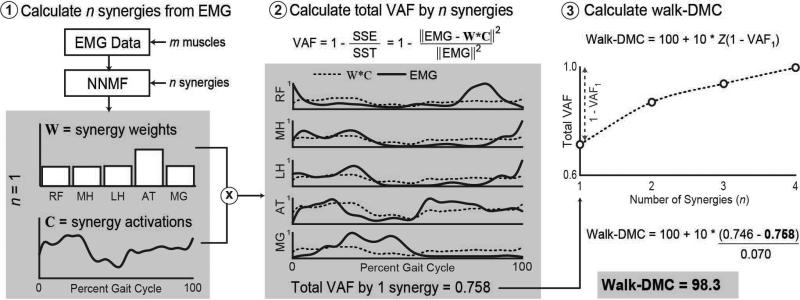Figure 1.
Sample of process to calculate the dynamic motor control index during walking (walk-DMC) for one of the unimpaired individuals. (a) Non-negative matrix factorization is used to calculate n synergies, W, and the activation of those synergies, C, over a gait cycle. In this example we have calculated one synergy (n=1). The center figure shows a comparison of the experimental electromyography (EMG) data and reconstructed data from one synergy, W×C. (b) The variance in EMG data accounted for (VAF) by n synergies is calculated as one minus the ratio of the sum of squared errors (SSE) and the total sum of squares of the EMG data (SST) calculated across the 101 points of the gait cycle. In this example, one synergy accounted for about 75.8% of the variance in muscle activity for the five muscles with surface EMG. (c) This process can be repeated for n=2, 3, or 4 synergies to evaluate the change in total VAF for with increasing number of synergies. Walk-DMC is calculated from the total VAF of one synergy as a z score compared with the mean (0.746) and standard deviation (0.07) of the unimpaired individuals. Muscle abbreviations: RF, rectus femoris; MH, medial hamstring; LH, lateral hamstring; AT, anterior tibialis; MG, medial gastrocnemius.

